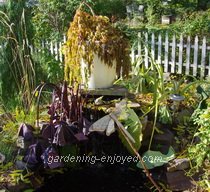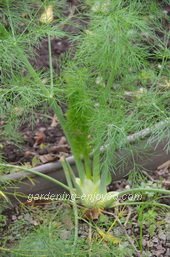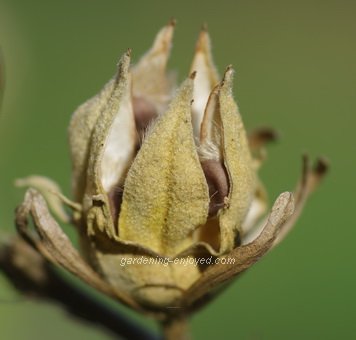
Nothing went according to plan this week. Friday, the “Dallying” publishing day, was completely overtaken. Lots of flower arrangements had to be created for the next day’s funeral and that should have taken just part of the day. It is much slower doing flower arranging with an assistant, particularly when that assistant is almost 2 years old and staying with Grandpa because he, theoretically, is too sick to attend his day care. They recover from previous day’s problems very quickly at that age. On the upside we did manage about an hour’s nap. I had really hoped that the rest of the tender plants outside would make it to 01 November. On the 29th of October I spent considerable time digging in the garden. A nice harvest of Colocasia tubers are now in the basement drying and what’s left of their leaves are adding to the compost. The last Tuberous Begonia also succumbed as did the wall of Begonia boliviensis. I will be tidying them up this coming week, adding their tops to the compost and looking to see if they made any tubers that I can dig out and store. Then I can go out and plant the remaining Tulip bulbs.
 Why does Mother Nature go to such lengths to mock me? I struggle to grow nice Fennel from seed most years. It has never been my most successful crop but some years I get some reasonable bulbs. The lovely Fennel in the picture is growing in one of my gravel paths. It self seeded there, from last years plants, that I tried to grow in the bed. I will take the insult and the Fennel. I do enjoy it chopped into a stir fry or even eaten raw where its delightful licorice flavour can really be appreciated. Maybe next year I should just broadcast some seed on the paths and forget trying to grow transplants.
Why does Mother Nature go to such lengths to mock me? I struggle to grow nice Fennel from seed most years. It has never been my most successful crop but some years I get some reasonable bulbs. The lovely Fennel in the picture is growing in one of my gravel paths. It self seeded there, from last years plants, that I tried to grow in the bed. I will take the insult and the Fennel. I do enjoy it chopped into a stir fry or even eaten raw where its delightful licorice flavour can really be appreciated. Maybe next year I should just broadcast some seed on the paths and forget trying to grow transplants.
 My nice little Rose of Sharon Hibiscus syriacus has been being deceptive. Like all of these plants it puts out some large green “buds” in the fall. Do not be fooled. They are not flower buds or anything like them. In just a few weeks they will look like the picture and the encased seeds will be scattering themselves around your garden. The seeds are quite hardy as you might discover in the spring when little Rose of Sharon seedlings become a weed in your lawn and growing beds. If yours look like mine, rush out and cut them off before those seeds drop. Most compost heaps do not get sufficiently hot to kill these seeds so resist your urge to toss them there. One Rose of Sharon is sufficient, there is no need to have several, even if they are free.
My nice little Rose of Sharon Hibiscus syriacus has been being deceptive. Like all of these plants it puts out some large green “buds” in the fall. Do not be fooled. They are not flower buds or anything like them. In just a few weeks they will look like the picture and the encased seeds will be scattering themselves around your garden. The seeds are quite hardy as you might discover in the spring when little Rose of Sharon seedlings become a weed in your lawn and growing beds. If yours look like mine, rush out and cut them off before those seeds drop. Most compost heaps do not get sufficiently hot to kill these seeds so resist your urge to toss them there. One Rose of Sharon is sufficient, there is no need to have several, even if they are free.
Time to answer a few questions. If you have a gardening question just ‘reply’ to this newsletter and send me your query. I try to answer most of the questions and the ones that I answer here are those that I think will have the widest interest. You can also find the latest garden updates on the front page of gardening-enjoyed.com. I try to change it every few days so check back often.
Judy Asks? .? One question I have for you Ken is what veggies might grow in a shaded part of the garden.? When I first started growing veggies many years ago the garden received full sun but as the years go by and my neighbour’s trees have grown, the sun is blocked leaving 1/2 my garden in shade? I am thinking of putting a raised garden especially for the tomatoes somewhere where there is now grass.?
Ken Answers! Shade and veggies don't really go well together but here is a rule that I use and it often works. If you just want leaves, Lettuce, Swiss chard, Kale, they have a better chance of producing in the shade than plants where we want fruit, Tomatoes, Peppers, Cucumbers. Keep experimenting. Remember, grass is essentially a waste of soil, in my humble opinion.
Robert Asks? We have one pear tree in our back yard that is about 20 feet high. This year, it looked like we would have lots of pears but two problems came up and we ended up having very few. The first problem were the squirrels. The squirrels would chew off a pear and then take some bites from it after it lands on the ground. I tried tin pie plates flapping in the wind but that only helped a small amount. The second problem was a sort of black blight that effected the leaves and the pears themselves. The black blight turned the leaves and pears black and they seemed to fall off then. I was also wondering what is the best way and time to trim the tree so that it is not quite so high.
Ken Answers! You appear to have some serious problems. The Squirrels are the least of them and I have no good solutions except for aJack Russell terrier in your yard 24/7. The blight you are describing sounds like it might be fire blight which is a bacterial disease of some fruit trees including pear. It is very difficult to control because it is a bacteria and not a fungus. Its life cycle and control are too long to detail here. Do a search on Pear fire blight and be prepared for some bad news if that is what you have.
111 Trent St. W.
Whitby ON
L1N1L9


 My nice little Rose of Sharon Hibiscus syriacus has been being deceptive. Like all of these plants it puts out some large green “buds” in the fall. Do not be fooled. They are not flower buds or anything like them. In just a few weeks they will look like the picture and the encased seeds will be scattering themselves around your garden. The seeds are quite hardy as you might discover in the spring when little Rose of Sharon seedlings become a weed in your lawn and growing beds. If yours look like mine, rush out and cut them off before those seeds drop. Most compost heaps do not get sufficiently hot to kill these seeds so resist your urge to toss them there. One Rose of Sharon is sufficient, there is no need to have several, even if they are free.
My nice little Rose of Sharon Hibiscus syriacus has been being deceptive. Like all of these plants it puts out some large green “buds” in the fall. Do not be fooled. They are not flower buds or anything like them. In just a few weeks they will look like the picture and the encased seeds will be scattering themselves around your garden. The seeds are quite hardy as you might discover in the spring when little Rose of Sharon seedlings become a weed in your lawn and growing beds. If yours look like mine, rush out and cut them off before those seeds drop. Most compost heaps do not get sufficiently hot to kill these seeds so resist your urge to toss them there. One Rose of Sharon is sufficient, there is no need to have several, even if they are free. Why does Mother Nature go to such lengths to mock me? I struggle to grow nice Fennel from seed most years. It has never been my most successful crop but some years I get some reasonable bulbs. The lovely Fennel in the picture is growing in one of my gravel paths. It self seeded there, from last years plants, that I tried to grow in the bed. I will take the insult and the Fennel. I do enjoy it chopped into a
Why does Mother Nature go to such lengths to mock me? I struggle to grow nice Fennel from seed most years. It has never been my most successful crop but some years I get some reasonable bulbs. The lovely Fennel in the picture is growing in one of my gravel paths. It self seeded there, from last years plants, that I tried to grow in the bed. I will take the insult and the Fennel. I do enjoy it chopped into a